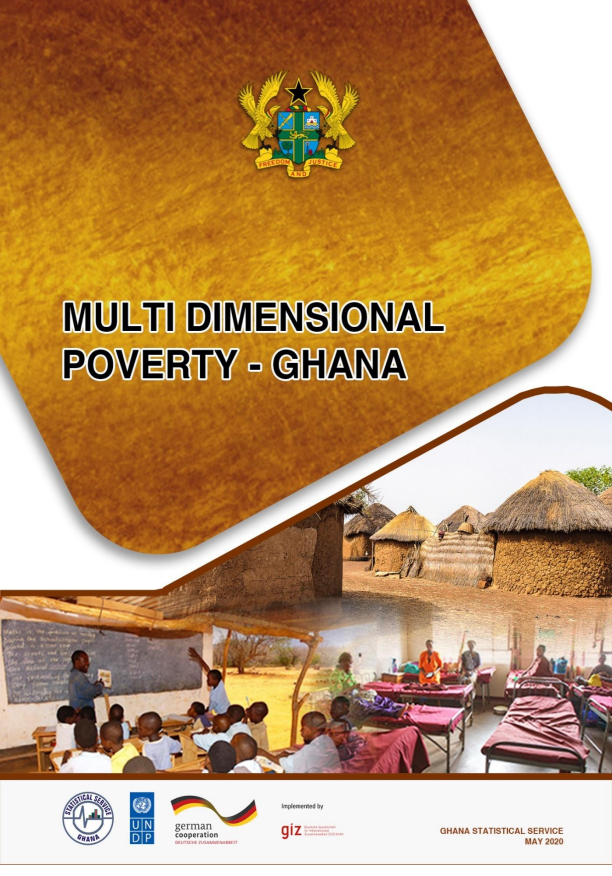Multidimensional Poverty – Ghana
This report presents the findings of the national Multidimensional Poverty Index (MPI) for Ghana. The Ghana MPI was developed by the Ghana Statistical Services with support from the German Agency for International Cooperation (GIZ), the United Nations Development Programme (UNDP), the MPI National Steering Committee, and the University of Cape Coast. Technical support was provided by the Oxford Poverty and Human Development Initiative (OPHI) at the University of Oxford.
Ghana now joins several countries from across Africa in using an official MPI to track and measure multidimensional poverty. The Ghana MPI tracks twelve indicators relating to three dimensions: Living Standards, Education and Health. The report uses data from the seventh round of the Ghana Living Standards Survey conducted between 2016/2017 survey periods. The report also employed harmonised datasets from the Ghana Multiple Indicator Cluster Surveys conducted in 2011 and 2018 for trend analyses.
The MPI provides a tool to coordinate the efforts of government stakeholders towards the social progress of individuals and households in line with meeting the 2030 Sustainable Development Goals (SDGs) in Ghana. With a decade remaining to achieve the SDGs, this report is timely and will feed into public policy formulation and retooling to address emerging issues. The figures will be updated frequently as new data become available.
Key findings of the report:
- The incidence of poverty (H) in Ghana was 45.6%, while the average intensity (A) was 51.7%. The Multidimensional Poverty Index (MPI), which is the product of H and A, was 0.236.
- In Ghana, more people are living in multidimensional poverty (45.6%) than monetary poverty (23.4%), but 19.3% of the population were experiencing both monetary and multidimensional poverty.
- The report indicates that 64.6% of rural populations in Ghana were experiencing multidimensional poverty, compared with 27.0% of urban populations. The Northern Region of Ghana had the highest proportion of multidimensionally poor people at 80%.
- The indicators in which the most people are poor and deprived are sanitation (44.1% of the population) and health insurance (40.1%).
- Between the survey years 2011 and 2018, the MPI, incidence, and intensity all saw statistically significant reductions, with particularly large improvements in electricity and cooking fuel.



